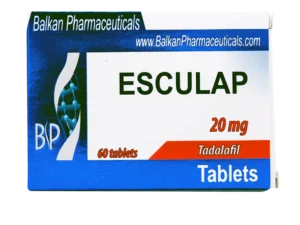ECAs are a combination of three drugs: ephedrine, caffeine, and aspirin, which is used in bodybuilding and fitness for weight loss and relief. The term ECA is an acronym that includes the initial letters of its constituent drugs. ESA-based sports nutrition products became particularly popular in the 1990s, when there were hundreds of different types of fat-reducing supplements on the market, but later the combination of ESAs was banned in many countries worldwide (USA, Canada, Russia). This is due to the abuse and use of ephedrine as a precursor for the production of drugs.
Efficacy of ECAs (ephedrine, caffeine, aspirin)
Placebo-controlled studies have made it clear that ECAs (standard dosage) are effective for burning fat. The combination of ephedrine, caffeine, and aspirin showed statistically significant superiority over placebo, with no serious side effects.
A meta-analysis of the data showed that ECAs increased fat loss by 1-3 kg per month, without additional interventions (exercise, diet). The effectiveness of the ECA combination increases dramatically with aerobic exercise and following a low-calorie diet.
Interestingly, the combination of caffeine and ephedrine is much more potent than taking each component separately. A special study was conducted that lasted six months. Obese patients were on a diet and received either caffeine (dosage of 200 mg/day) or ephedrine (dosage of 20 mg/day) or a combination of caffeine and ephedrine (dosages of 200 mg + 20 mg/day) or a placebo. The formula that proved most effective was caffeine plus ephedrine. Those who took it lost 16.8 kg versus 13.2 kg for those who took the placebo.
Why do we need aspirin in ECAs?
About 15 years ago, when only caffeine and ephedrine were actively used for weight loss, scientists from Harvard Medical School decided to add aspirin to the combination. It was assumed that aspirin would enhance and prolong the effect of ephedrine. The mechanism of action of aspirin is to inhibit the synthesis of prostaglandins, which can inhibit the secretion of norepinephrine in synapses and lead to a decrease in the effectiveness of ephedrine.
A study by The University of London’s Department of Nutrition and Dietetics on women compared the effectiveness of a combination of E+K and E+K+A. The groups showed no significant differences in fat mass reduction.
Another study at King’s College in London confirmed that aspirin does not increase the effects of ephedrine. After one week of taking ECAs and ECs, the differences in fat mass loss did not exceed 30 g.
It should not be forgotten that aspirin is also a pain reliever and can prevent the unpleasant feeling of exhaustion. Other drugs from the same group: Paracetamol, Ibuprofen may have a more pronounced anti-pain effect.
Side effects and harms
Data on serious side effects of ECAs are based only on sporadic self-reported cases, with patients generally found to have a predisposition or cardiovascular pathology that occurred before ECA use.
In studies of ECAs in healthy subjects, no serious complications have been reported during or after drug use. Thus, the combination of ephedrine, caffeine and aspirin can be considered relatively safe. Exaggeration of danger of ECAs is due to ignorance of factual data and anti-drug propaganda, nothing more.
A course of ECAs (ephedrine, caffeine, aspirin)
Optimal ratios of ephedrine, caffeine and aspirin are 1:10:10 or 1:10:15. If converted to the dose of active substances (one portion of ECA): ephedrine – 25 mg, caffeine – 250 mg, aspirin – 250 mg. Up to three servings are usually taken per day. Due to insomnia, taking ECAs in the evening is not recommended.
The duration of the ECA course is 1 – 2 weeks after which you should take a break for 1 week and then the ECA course can be repeated. Longer courses should be avoided because the effect decreases rapidly and addiction develops.
To increase the effectiveness of an ECA course, you should:
- Perform aerobic exercise.
- Follow a weight loss diet
- Take nutritional supplements for losing weight






